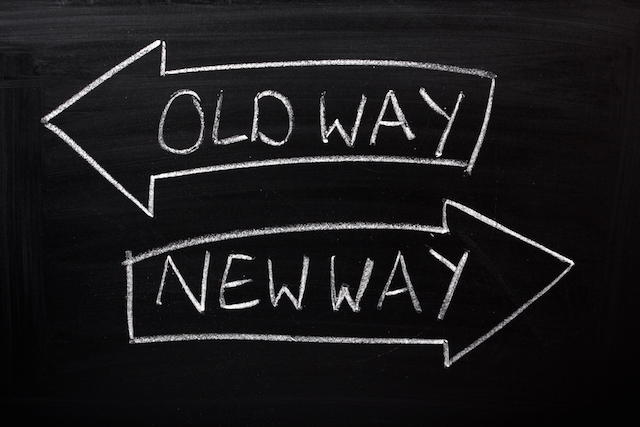
It’s important for businesses to adapt. This is even more important given Chris Whitty’s comments that some disruptive measures will need to be in place until the end of the year. But how do you go about this?
Acknowledge you know nothing right now
Whilst consumer behaviour may never return in the same way, we simply do not know what will happen down the line. Some of that work you did previously may still be relevant in the future, the old theories may return to be true, and those KPIs may become relevant again at some stage. So do not waste the investment you have made by losing all that work today. Just because it is not the right thing this moment, does not mean it will not be the right thing tomorrow.
Assume that old rule of thumb is no longer relevant and go about proving a new theory with a clean mind. If it happens to turn out that the new rule is the same as the old, then great. But go back to your three-year-old self and ask why of everything. Demand proof that what you are being told is valid. If you assume that it is either correct, or incorrect, then you will subconsciously introduce bias into your decision making. Potentially leading to the wrong result and missing out on golden opportunities or end up crashing on the rocks.
How are your customers behaving?
Do you truly know how your customers are behaving right now? Do you know what products are selling, what aren’t, and how you can use your product offering to help society as a whole? Do you have pockets of activity that are working? How are those that are being driven to your website, do you really know what is driving them? Do you know what matters to them and the challenges they face today?
Some may say no at this point. In that case, my first recommendation would be to get the reporting in place to monitor your day to day business activity. With this knowledge you will be able to build out an idea of your current target audience, and the subject matter that is likely to be important to them right now. It’s bound to be different than before COVID-19 and will allow you to start pulling together a short-term plan based on how customers are engaging with your brand at a more emotionally involved level. Whilst on that subject, if you previously did not treat your customers as human beings then now is the time to start. Customers will respond better to being put front and centre of the conversation, rather than treated as a commodity.
Review those business objectives
Think back to the business objectives you had before COVID-19, have you reviewed those to see if any have survived first contact? If you have pivoted your business to react to market conditions, then have you worked out what you need to do for the rest of this calendar year?
This will focus minds on what is genuinely important right now. It will enable senior teams to get the views they need and focus on the KPIs that are important today. It will ensure that attention is placed on answering questions that will genuinely drive opportunity. After all, with everyone viewing cash as king right now, any spending needs to be able to generate tangible ROI to ensure investment is wisely spent.
Ensure that KPIs are still relevant
Having identified key objectives for the next six months or so, then are the KPIs you still had relevant? And if they are, then are they being calculated using the right set of data, or in the right way?
Even if you are in the position that all the previous steps are complete, I would recon that your previous goal of growing the business by x% is probably no longer the right target – even if you are in an industry that is riding this storm relatively unaffected. Now’s the time to review those targets and make sure you have set something that is achievable in the current climate. More than ever, staff need to be motivated by a goal they can reach. Depending on the nature of the KPI, then it may be wise to make sure that things are being considered after the government interventions started – otherwise your results could be skewed by pre-COVID-19 data.
Develop any missing presentation, reports, or self-serve functionality
Now we have our KPIs linked to our business objectives, next we need to review the reporting hierarchy to ensure that all levels of the business get access to the information they need to navigate these challenging times. Be it your senior-execs getting the top level figures they need, your marketing managers getting key insight into what is working right now, or your stock control teams making sure that they have the right products available to meet demand. Everyone is going to have a need to review the data you hold to ensure that all activity aligns with how your customers are behaving right now.
In fact, you probably have more queries being asked right now your staff have hours to solve them. The answer to this problem will be a good, self-serve, analytical platform that provides key information to the users who need it most. This functionality will ensure the data is in the hands of the decision makers, and not under lock and key within a dedicated team that are likely to be swamped. You will probably have staff with some capacity, and a self-serve platform will allow you to re-deploy that resource to get answers quicker.
Review your predictive analysis
By the time you’ve got to this stage, you’ll know how your customers are engaging with your brand, you’ll have a strategy to keep the ship true, and you’ll have the tools in place to measure the impact and to start to understand why certain things are happening. But the one area we have not looked at are those segmentation’s, predictive models, next best action models and LTV analysis that you have previously undertaken.
This situation is unprecedented and as such will have had an impacted your data. But unprecedented situations can, and do, cause predictive analysis problems. Trends are not followed, and old patterns do not play out as predicted. That predictive model you built will give you in-accurate results unless you give it some TLC. The change of customer behaviour is likely to mean that your old segmentation is no longer accurate.
The long and short of it is you will need to review, retrain, and rebuild. The world has changed, and we need to make sure our predictive analytics accounts for this. Right now, many previous projects may not and so an impact evaluation does need to be done.
If you take one key theme, then let it be this. Question everything, keep the rose-tinted glasses in the draw, and ensure you have what you need to survive in the new reality.










